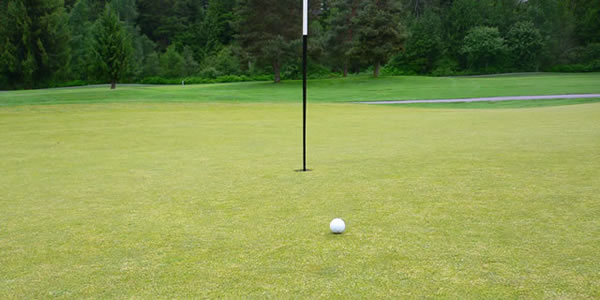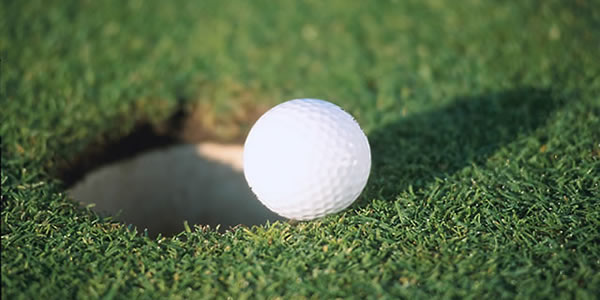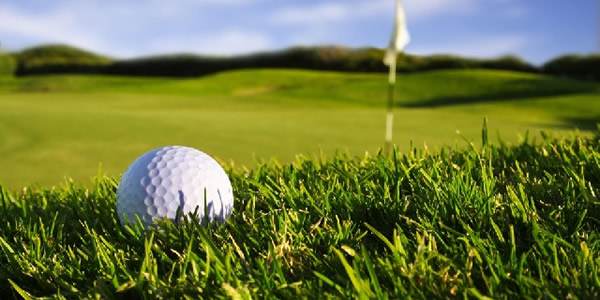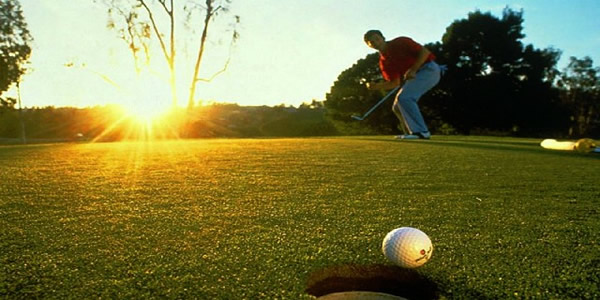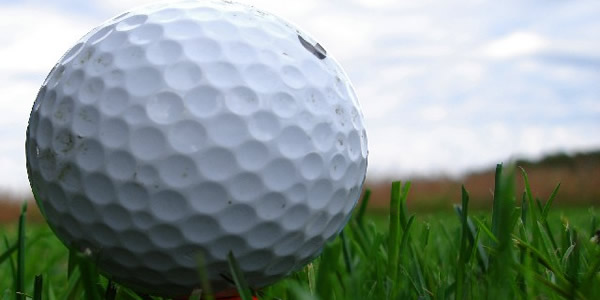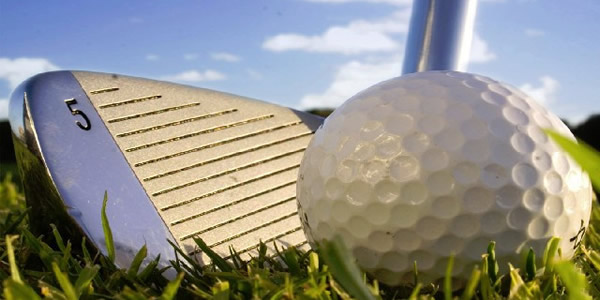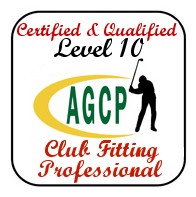The Fitting Process
How, what, and why we do it
WhatsNew:
Gooder Golf partners up with Mizuno Golf
We're pleased to announce a that we have recently partnered up with Mizuno Golf. Mizuno is a well established company with a long history of producing high-quality product. More great fitting options are now available to us to help golfers get into the right gear that enables them play their absolute best golf. Please see the Mizuno page in our Vendors section for more information.
Gooder Golf partners up with Tour Edge Golf
We're pleased to announce a that the Tour Edge / Exotics Golf family of products will be offered in our fitting lineup. More quality options available to fit you with helps us get the right product into your hands. Please see the Tour Edge / Exotics page in our Vendors section for more information.
"Gooderized" clubs notch a victory on a Professional Tour!
September/2020 was a momentus month for Gooder Golf and one of our "Gooder-ites" (customers). A set of our irons were used to notch a victory on the COVID shortened 2020 Mackenzie Tour (Canadian Tour). It was the first professional win carded for our professional Gooder-ite, and also the first professional win notched for Gooder Custom Golf Clubs. We are thrilled to be able to have helped multiple local golfers win their local club championships, and we have plenty of activity in local amatuer tournaments, but it is especially gratifying to know that our clubs can not only make the cut, but win on a professional tour!
AGCP announces LEVEL 10 certification for Bert Reich
The Association of Golf Clubfitting Professionals recently issued a press release to announce that Bert Reich (Gooder Golf) attained LEVEL 10 status in the field of golf clubfitting and clubmaking. Bert was the second AGCP member in Canada to reach this level.
CurrentNews:
First Heading or Title
September 16, 1926
Lorem Ipsum is simply dummy text of the printing and typesetting industry. Lorem Ipsum has been the industry's standard dummy text ever since the 1500s.
 Lorem Ipsum is simply dummy text of the printing and typesetting industry. Lorem Ipsum has been the
industry's standard dummy text ever since the 1500s.
Lorem Ipsum is simply dummy text of the printing and typesetting industry. Lorem Ipsum has been the
industry's standard dummy text ever since the 1500s.
RecentEvents:
First Heading or Title
September 16, 1926
Lorem Ipsum is simply dummy text of the printing and typesetting industry. Lorem Ipsum has been the industry's standard dummy text ever since the 1500s.
 Lorem Ipsum is simply dummy text of the printing and typesetting industry. Lorem Ipsum has been the
industry's standard dummy text ever since the 1500s.
Lorem Ipsum is simply dummy text of the printing and typesetting industry. Lorem Ipsum has been the
industry's standard dummy text ever since the 1500s.
The Fitting Process
Notes first:
First off, if a retail golf store, or a "pro" claim they can fit you properly in 20-30 minutes, they're speaking in forked-tongue. My average iron fitting is between 2.5 - 4 hours long, and in some cases even longer. Your fitting is not complete until we (both you and me) are satisfied with our best performing prototype. I will not build a set of clubs until I am confident we have acquired sufficient and satisfactory data to base our build on.
Fittings are by appointment only. During the golf season (mid April through mid-October around here), I am typically booked anywhere from 2-4 weeks in advance. At the start of the golf season, I can be as much as 8 weeks booked. Fittings are performed in the order they were booked - please keep this in mind when you contact me for your fitting - contacting me earlier is better than later. It is very unlikely you'll be able to call me on a Thursday, and come out for a Saturday fitting the same week - I have an obligation to the customers who have pre-booked their fittings, sometimes many months in advance. Thank you for understanding.
Also note that "long-distance" fittings (where you are not able to come for an in-person fitting) are no longer an option. We did some of them in the past with good success, however the only true way to get ALL the important details right requires your presence for a fitting session. There are too many variables that cannot be measured without you being here. Along that same note - I'd rather NOT, and will NOT build a set of clubs "on-spec" (where you ask me to build a set with this head, and that shaft, to this swingweight). If that's what you're after you might want to do some online searching - I'm sure you'll be able to find an "order taker" online who will be glad to sell you something that most likely is wrong for you. The purpose of getting fit is to determine the best performing combination for YOU, many times it's not what you think it will be. Remember, nothing is pre-determined in custom fitting - we'll let your body, your swing, and the data we collect tell us what is best for you.
Now, on to the meat & potatoes of clubfitting.....
What's involved in "Performance-Based" fittings;
-
You bring your current clubs and golf shoes with you (and golf glove if you wear one).
-
A friendly discussion (interview) where I will ask you several questions about your game, your swing, your shot tendencies, ball flight, your consistency, etc. Some initial measurements to you and your existing clubs may be taken at this point.
-
Some warm-up time for you swinging and hitting balls to get loose.
-
Once you're warmed up, we fire up the launch monitor and we'll get you hitting some 6-irons (I fit for irons with 6-irons) to acquire data on your swing and ball flight tendencies. We record things like swing speed, ball speed, launch angle, angle of attack, back spin, side spin, shot direction, carry distance, total distance, flight time, ball height, descent angle, swing path, face angle... and more. We use your clubs initially to establish our baseline with regards to the fore mentioned elements. Impact labels on the club face are used at this stage also - this shows us where the ball contact is happening on the face of the club. During this stage, please don't try to impress me by trying smash your 7-iron 190 yards when you can only hit it 145 with your regular swing. The "more better" the data is that we acquire, the "more better" your new clubs will be.
-
We will then test you with various prototype fitting club combinations for club length, shaft flex, shaft weight, head weight, swingweight/MOI, head design - all of this testing is done using the launch monitor and impact labels so we can see and track the results. For irons, I have several different 6-iron heads fitted with Club Conex fittings which can be inter-changed with several different shafts (approximately 20,000+ possible head/shaft combinations for irons alone). For drivers, I have several different driver heads prepared with Club Conex and several different shafts prepared (several hundred possible head/shaft combinations). Here is where you get to see and feel for yourself how these club changes affect performance & feel. Remember to eat your "Wheaties" on fitting day - you'll be making a few swings for me.
-
When possible, high-def video of your swing is taken from down the line, and face-on with a 6-iron and a driver. I upload the video to my computer and run it through golf swing analysis software to help me acquire certain key data elements of your swing. You can also learn a great deal about your swing from the swing videos - this data is always shared with you. What you think you're doing, and what your body is actually doing during a swing are usually two very different things.
-
Lie angle in relation to your swing is checked dynamically (with you hitting balls).
-
By the time we're done, we will have dialed-in to a combination that will produce better feel, consistency, a higher percentage of on-center ball contact - you get to see and feel it for yourself - impact labels, video, and the launch monitor will NOT lie to you. I'm confident that after our session is done, you will be a believer too!
-
When your fitting is complete, we should have learned several critical and VALID data points from our fitting "journey".
-
There will be one specific club LENGTH that feels/performs better and more consistent for you and your swing
-
There will be one shaft FLEX that feels/performs better and more consistent for you and your swing
-
There will be one SHAFT WEIGHT that feels/performs better and more consistent for you and your swing
-
There will be one HEAD WEIGHT that feels/performs better and more consistent for you and your swing
-
There will be one HEAD DESIGN that feels/performs better and more consistent for you and your swing
-
There will be one club TOTAL WEIGHT/BALANCE (MOI) that performs better for you and your swing
-
YOUR proper LIE ANGLE will be determined through "dynamic" testing
-
GRIP preference will be determined
-
SET MAKEUP will be discussed and recommended
-
-
Iron fitting sessions generally last anywhere from 3 - 4 hours (sometimes even a bit more). If we have a long iron fitting, it is unlikely that we can address the driver on the same day (your swing muscles just run "out of gas"). In cases like this, driver fitting will have to be scheduled for a different day.
Something to please keep in mind with regards to custom fittings; In nearly all cases I am able to make a positive difference and help a golfer attain greater distance, consistency, accuracy, etc. - this is done by experimenting with our fitting prototypes (different shaft length, flex, weight, head weight, total weight, head design, loft, etc). There are rare instances where due to an inherent swing habit/flaw a golfer has formed or developed into habit over the years, where these "habits" take charge and overpower any changes/adjustments we make on our prototype fitting clubs. I've actually seen a few cases (can count 'em on one hand) where no matter what changes we make to our prototype fitting clubs (and in some cases very drastic changes) we did not see any change or improvements. Things like a very pronounced "over the top" move, severe outside-in swing path, severe inside-out swing path, body balance/swaying issues, inconsistent swings, etc. In cases with severe swing flaws, you may want to consider having your swing worked on by a qualified teaching professional to get some help for your swing ailments before undertaking the fitting process. I am not a swing coach or swing doctor - golf club doctor YES, swing doctor NO. When it comes to the GOLF SWING, think of me kinda like an X-ray technician - I can tell you what I see, but I can't/won't tell you how to fix it. When it comes to GOLF CLUBS - that is my area of specialization - I build excellent golf clubs based on the valid data we acquire during a fitting session. I can perform some pretty good magic with golf clubs, however I cannot perform any magic with an ailing or flawed golf swing.
Putter Fitting
Putter Fitting – The Most Important Club to Custom Fit
Golfers use the putter more than any other club in the bag, yet proper putter fitting rarely gets the attention it deserves. 43% of the average golfer’s shots are struck with the putter. Yet how do most golfers buy a putter? By trial and error, with the emphasis put almost entirely on the “look” or the design features of the putter head, instead of the 4 critical putter fitting elements which, if properly fit, could strip strokes off your score.
Granted, it’s a fact – if the golfer isn’t confident with the look of the putter behind the ball, they won’t have the confidence or the ability to accurately line up the putt. On the other hand, if the putter’s Length, Loft, Lie and overall weight balance are not matched to each golfer’s style of putting, there is little chance the putter will lower your score.
Putter Length - When you think that golfers are so different in their height, arm length and putting posture, it’s logical to think that the length of the putter must be custom fit to ensure a smooth putting stroke. Arms scrunched up into the body or stretched out to the point of tension while stroking the putt are not conducive to putting consistency.
Putter Loft - The loft of the putter must be matched to the golfer’s hand position at impact to ensure the ball rolls smoothly. Does the golfer forward press to start their stroke or position the ball back of center in their stance? If so, they need more loft. Is the golfer a wristy putter or do they position the ball ahead of the center to front of their stance? If so, they may need less loft
Putter Lie Angle - Since putters do have loft, that means if the toe or the heel of the putter is off the ground at impact, the face is pointing somewhere other than the intended target line. For consistent accuracy, the putter’s lie angle must be adjusted for each golfer so the putter sits perfectly in the center of the sole from heel to toe.
Putter Weight Balance - THIS IS HUGE!!!! There is a weight balance for putters that will allow every golfer to be more consistent - Wheter it be weight at the head, or at the butt of the club, or part way down the shaft - we have seen significant improvements in putter consistency and control by finding the right weight balance of the putter for the golfer. One of the most interesting developments in modern putter fitting is to add weight in the grip end of the putter. Counterweighting, as it is called, with usually a 60 to 100 gram weight installed in the grip end of the shaft is proving to allow many golfers to develop a smoother stroke which results in more on center hits with the putter and more consistent distance control of the putt. We have used anything from as little as 20 grams counterweight, all the way up to 150 grams.
Thanks to Tom Wishon for his contribution on putter fitting variables mentioned above.
Bert's notes on putter fitting.............. I tweak/optimize far more of golfers' existing putters than I build. This is usually because the golfer buys a putter because there is something he/she likes about it (the look, the feel at impact, the sound, etc.). We take something the golfer already likes, and make it "more better" (aka Gooder) by ensuring the length/loft/lie are correct, and then testing with weight placement/distribution. By the time we are done, the golfer is holding something that FEELS good, and allows the golfer to make a repeatable putting stroke - this is going to help the golfer's consistency on the greens, and boost confidence levels too. For a single club that accounts for somewhere around 40% of your strokes in a round of golf - which club do you think (1) is an absolute MUST in your bag to be fit correctly, and (2) deserves AT LEAST 40% of the time you dedicate to practice? (even more than 40% if you're not good at putting).
2025 Fitting Fees;
Irons only fitting - $335.00 + taxes
Driver only fitting - $335.00 + taxes
If you've done one of the above, and come back for the other **within 60 days** - $235.00 + taxes
Putter fitting (or optimize your existing putter) - $135.00 + taxes (+ incidentals*)
*(Incidentals for putters could include grip, shaft, weights, counter-weights, shop supplies)
NOTE: It is VERY rare to be able to complete an irons fitting and a driver fitting properly on the same day. Usually by the time we're done with the irons, your "swing muscles" are out of gas. Rather than collect "polluted" data, in most cases it is best do do the driver fitting on a separate day when you are fresh again.
Fittings are by appointment only, and must be paid in full before the fitting commences.

